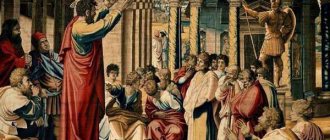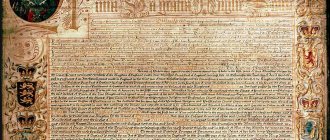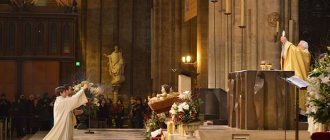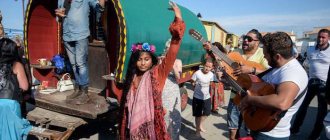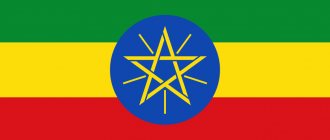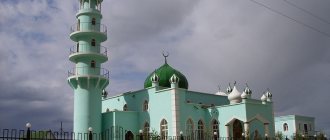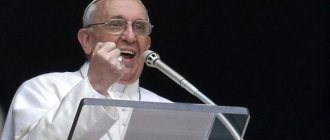Religion plays a fairly large role in the United States. At one time, the first English colonies on the territory of the modern United States of America were created precisely by religious refugees; later, mass immigration into the country of people from different countries provided an extraordinary diversity of religious beliefs of the inhabitants of the state.
It was in the United States that many of the religious movements widespread in the world today originated, for example, such branches of Protestantism as the Episcopal Church, Adventism and Pentecostals; Church of Jesus Christ of Latter-day Saints; Jehovah witnesses; Scientology, which arose quite recently, in the middle of the last century, and some others.
The First Amendment to the US Constitution determines that there can be no state religion in the United States and guarantees freedom of religion in the country. Almost in the United States today you can meet people professing all world religions.
Although official censuses do not ask about religious affiliation, various public organizations collect such information about the US population.
According to survey results, about seventy-five of the US population call themselves believers. The most common religions in the USA
| Religion | The number of its adherents relative to the total US population |
| Christianity | about 69% |
| Judaism | about 2% |
| Islam | about 1% |
| Buddhism | about 1% |
| Hinduism | about 1% |
| Other religions | about 1% |
| No religious affiliation (agnostic, atheist) | about 25% |
In God We Trust
motto on the one dollar bill
The phrase " In God We Trust"
"("In God We Trust") has been one of the national mottos of the United States since 1956. It was first minted on the United States two-cent coin in 1864, and has been featured on all United States coins and bills since 1957.
The ratio of the number of believers to the total population in different US states is heterogeneous.
Most religious people are in the Bible Belt - states in the South of the United States. Many parishioners of the Southern Baptist Convention, traditionally popular in the region, live here. The state with the highest church attendance is Utah, where the Church of Jesus Christ of Latter-day Saints (Mormons) has traditionally been strong. The least religious states are the New England states in the Northeastern United States (Vermont, New Hampshire, Maine) and the Pacific states of the Western United States (Oregon and Washington). US states with highest weekly church attendance
| State | Number of parishioners relative to the total population of the state |
| Utah | about 51% |
| Mississippi | about 47% |
| Alabama | about 46% |
| Louisiana | about 46% |
| Arkansas | about 45% |
| South Carolina | about 42% |
| Tennessee | about 42% |
| Kentucky | about 41% |
| North Carolina | about 40% |
The number of supporters of a particular denomination among racial and ethnic groups in the United States is very heterogeneous.
Distribution of religious affiliation among US racial and ethnic groups (relative to total population)
| Religion (confession) | Non-Hispanic Whites | Blacks (African Americans) | Hispanic or Latino | Others (Asians, indigenous peoples etc) |
| Christianity , including | about 70% | about 79% | about 77% | about 49% |
| Protestantism | about 48% | about 71% | about 26% | about 33% |
| Catholicism | about 19% | around 5% | about 48% | about 13% |
| Jesus Christ of Latter-day Saints (Mormons) | about 2% | less than 0.5% | about 1% | about 1% |
| Jehovah witnesses | less than 0.5% | about 2% | about 1% | about 1% |
| Orthodoxy | about 1% | less than 0.5% | less than 0.5% | about 1% |
| Judaism | about 3% | less than 0.5% | about 1% | about 1% |
| Islam | less than 0.5% | about 2% | less than 0.5% | about 2% |
| Buddhism | less than 0.5% | less than 0.5% | about 1% | about 4% |
| Hinduism | less than 0.5% | less than 0.5% | less than 0.5% | about 8% |
| No religious affiliation (agnostic, atheist) | about 24% | about 18% | about 20% | about 29% |
Spiritual heritage
The religion of the USA is quite democratic and dynamic. Its distinctive feature is differentiation. Recently, many new religious movements and directions in existing religious organizations have appeared in the United States. Therefore, it is difficult to unambiguously answer the question of what religion is in the United States. Strict adherence to tradition is no longer in fashion. And yet, a few indigenous people try to preserve the memory of the past. They are the followers of the ancient religion of the Incas, who once lived in North America.
Constitutional freedom of religion
The text of the First Amendment of the United States Constitution states that Congress shall make no law respecting an establishment of religion, or prohibiting the free exercise thereof, or abridging the freedom of speech and of the press, or the right of the people peaceably to assemble, or to petition the government for a redress of grievances. This means that no matter what faith or religion Americans have, the constitution guarantees its free exercise and also prevents the government from favoring one over the other at the state level. However, a number of states were not bound by this provision, for example, in 1830, the Massachusetts government, having privileged one religion, provided tax money to local community churches. The Supreme Court, since the 1940s, has interpreted the Fourteenth Amendment to allow for similar situations in individual states and applied the First Amendment to state and local governments. Therefore, the question of which faith is the most influential in America sounds incorrect, since none of the religious organizations can have political action, according to the Constitution of the country.
History of the development of religion in America
The history of religion in the United States is full of many events. Historically, America has long been a Protestant state. This was due to the fact that after the discovery of the New World by Christopher Columbus, emigrants from various countries began to come here. The northeastern part of the United States was occupied by British emigrants who were persecuted by the Anglican Church. They were against the introduction of Catholicism. The pilgrims established strict religious foundations in the new land. Any kind of entertainment was considered a mortal sin.
Gradually, many Protestant movements emerged in America. This happened due to the fact that emigrants from various countries considered it necessary to establish their own principles and foundations in the new land, since they believed that it belonged to no one.
North America at that time was inhabited by Indian tribes who had previously arrived from Asia. At first they settled in Alaska, then migrated to America.
At the end of the 17th century, the American population was divided into black slaves and the white population, which made up 98% of all American residents. They were all Protestants.
South America began to be settled by the Spaniards, who converted the Indians to the Catholic faith. Therefore, the population of Latin America is mostly Catholic. Other predominant religions in the United States will be detailed below.
Protestantism – plurality and diversity
History says that the New World was populated mainly by those who, due to religious beliefs, could no longer remain in Europe, that is, in the Old World. Basically, these were active, enterprising people who did not agree with the bureaucratization of the traditional Catholic Church of those times - Protestants. They were persecuted by the church authorities, who had enormous power and influence at that time, and therefore they very willingly took part in expeditions overseas, moved to America, and explored new lands. Strictly speaking, America owes its prosperity to them - they were the first.
It is not surprising that the first religious communities were Protestant, and now the main religious movement in America is Protestantism.
Religious directions
The US religion was briefly described above. I would like to understand more deeply about the core beliefs of America.
The majority of the US population professes Christianity. Approximately 55% are Protestants and 28% are Catholics. America is also home to a small percentage of Jews and representatives of other religious movements. Among African Americans living in the United States, the majority are Muslims.
In the 60s there was a religious surge in the United States. By that time, there were more than a thousand religious organizations in the country. Participants in cult movements are predominantly young people.
The predominant religions in the United States are New Age religions. Among them one can highlight the community of Disciples of Christ, founded in the 19th century, Mormons, Seventh-day Adventists, Baptists, Jehovah's Witnesses, Lutherans, and Methodists.
The main religion of the USA is Christianity. Most modern trends stem from it.
Islam
Islam ranks third in terms of the number of parishioners. Muslims came from the Ottoman Empire and Africa. A surge in popularity occurred in the 30s of the last century.
In Detroit, Wallace Fard Muhammad creates a racist Muslim organization called the Nation of Islam. He proclaimed people with black skin to be the “cream of the Earth.”
More than two-thirds of American Muslims are black people.
A member of the organization was the famous boxer Cassius Clay. He became imbued with the ideas of Islam, accepted a new faith and took a new name for himself. He went down in history as Mohammed Ali.
A little later, the Nation of Islam will become more tolerant in its statements and reduce the intensity of radicalism. The organization still has a strong influence on the African American community.
The number of Muslims in the United States is increasing every year due to refugees from the Middle East.
Christianity
The representative of Christianity in the United States is the Orthodox Church. In 1970, it received autocephaly from the Orthodox Church of Russia. There are also other churches operating in the United States under various jurisdictions, the largest of which is the American Archdiocese.
The governance of the autocephalous Orthodox Church is vested in the Holy Synod. It consists of all the ruling bishops. The Synod holds sessions twice a year. Between its meetings there is also a permanent Small Synod. The management team includes all bishops of the church, representatives from each parish (men over 18 years of age), members of the Metropolitan Council, members of theological schools and other organizations.
The chief among the bishops is the Metropolitan, who is elected by secret ballot. Under the Metropolitan there is a Metropolitan Council, which includes treasurers, two representatives from each diocese, the chancellor and the Metropolitan himself. Individual dioceses are governed by bishops.
St. Patrick's Cathedral, New York
In the heart of Manhattan lies St. Patrick's Cathedral, a neo-Gothic church that has been in existence since 1858. It is located on one large piece of prime real estate in the city.
During its construction, Archbishop John Hughes was criticized for his decision to build the church so far from the city limits. Of course, this turned out to be a wise decision, as the city soon expanded far beyond its borders in the mid-19th century.
St. Patrick's Cathedral features spiers that rise 330 feet into the air. Magnificent stained glass windows were made in Boston, England and France, and the cathedral also contains a Pieta three times larger than Michelangelo's work.
Protestants
Protestantism is one of three branches of Christianity. The question of which religion predominates in the United States can be answered as follows: “Protestantism.” The movement arose after Catholicism and Orthodoxy during the Reformation. Protestants in the United States are represented by a number of churches and independent denominations. The main movements of Protestantism include Lutheranism, Evangelicalism, Baptistism, Calvinism, Anglicanism, Adventism, Pentecostalism, Methodism and many others.
The study of the Bible is at the heart of Protestantism. Everyone should know the only source of creed and build their lives on its basis.
The main tenets of Protestantism include the ideas of the trinity (Father, Son, Holy Spirit), the Incarnation, the Resurrection and Ascension of Jesus Christ.
Protestants strictly follow the decisions established by the first two Ecumenical Councils (Nicaea and Constantinople). Adherents of this movement are firmly convinced that only faith and predestination can save humanity.
Differences between Protestantism and other religious movements
Protestantism has significant differences from Orthodoxy and Catholicism. They consist in modified ritual and cult activities. Protestants are categorically against the veneration of elders and saints, veneration of icons, confession and communion, repentance, veneration of holy relics, the sign of the cross and monasticism (except for certain branches). Some Protestant churches still perform baptism and communion rituals. But Catholics and Orthodox believe that in this performance they are not endowed with God's grace.
The main features of worship services in Protestant churches are prayer, preaching, singing of Sacred texts, and modesty in the conduct of rituals.
Most Protestant organizations do not even have their own church.
What is the official religion in the USA? There is no such thing in the States. Every citizen has complete freedom of religion.
Research data
What is the most common faith among Americans today? The majority of US adults identify as Christians, while about 20-25% claim no religious affiliation. According to a 2021 study by the Public Religion Research Institute, approximately 69% of Americans identified themselves as Christians, with 45% affiliated with various churches that could be considered Protestant and 20% practicing Catholic beliefs. The same study states that followers of other non-Christian religions, including Judaism, Buddhism, Hinduism, and Islam, collectively make up about 7% of the population.
Mississippi is the most religious state in the country, according to a 2021 Gallup poll. 63% of the adult population of this southern region consider themselves traditionally religious and attend church services almost every week. In New Hampshire, only 20% of adults consider themselves to be truly religious, and the state is considered the least religious. According to testimony from the same company for 2021, 73.7% of Americans recognized Christianity as their religion. Of this number, 48.9% are Protestants, 23% are Catholics, and 1.8% are Mormons. Of the general population, 18.2% are indifferent to any religion, and 5.4% are associated with other religions.
Mormons
Mormons are members of the Church of Jesus Christ of the last days. This religious movement is very controversial. Rather, it is more like an occult sect in which the Christian-Biblical principle is manifested only externally.
The main center of Mormons is located in Utah. Their main mission is to help people achieve the Divine Kingdom. Its implementation falls on the shoulders of the organizational structure created under the Church. The core of the entire Mormon church is the congregation, which should consist of no more than 500 people. In each of them, missionary activities are carried out on the ground. As soon as the number of people in one parish exceeds the allowable limit, it is divided in half. The parish is headed by the president and his two advisers. The number of parishes in one region is also limited. If there are a lot of them in a certain territory, then a special organization is created - a “stake”, which is also headed by the president.
Mormon ordinances
Mormon scriptures include the Bible, the Book of Mormon, the Covenants and Doctrines, and the Pearl of Great Price.
Mormons do not have a canonized prayer. Rather, it is like an improvisational trust in the Lord. A special place is occupied by the rite of baptism, which consists of being immersed in water three times and pronouncing certain words, called the triune formula. Anyone who, for any reason, leaves the Mormon Church subsequently has no right to perform this rite. This is the punishment.
Comparative statistics
When asked what the most common religion among Americans was, in 1963, 90% of American adults said they were Christians, while only 2% were unaffiliated. In 2021, 69% identified themselves as Christians, while 24% remained without a religious affiliation.
According to a 2002 Pew Research Center survey, about 6 in 10 Americans said religion plays a very important role in their lives, compared with 33% in the UK, 27% in Italy, 21% in Germany, 12% in Japan. , and 11% in France. In the research report, the results showed that America, compared with other developed countries where faith plays a minor role, is more similar to developing countries, which have a much higher rate of religious population.
Seventh-day Adventists
This Protestant movement preaches that Jesus Christ will soon descend to Earth again. At first glance, it may seem that this movement is no different from the Protestant one. However, several key features of Adventist teaching do not allow us to call them Protestants. Seventh-day Adventists can rather be classified as a quasi-denomination.
Adventist Doctrine
- The second coming of Jesus Christ is indicated by 5 signs: the decline of morality, the existence of the papacy, the increasing fear of people about future events, the emergence of Adventism, open preaching throughout the world.
- Along with the Bible, Seventh-day Adventists also study the Prophecies of Ellen White. Almost all doctrines of the Adventist Church are based on this “divine revelation.”
- The main point of teaching is the honoring of the Sabbath. It arose based on the vision of Ellen White, in which she saw all the Divine commandments burning with bright fire, except for one, which calls for honoring the Sabbath. Based on this, Adventists concluded that all other religious movements have apostatized from the Lord, violating this commandment, and therefore cannot be accepted into the Kingdom of God. Only Seventh-day Adventists can be saved.
- Speaking of the soul, Adventists believe that it is mortal until the Lord resurrects it. They also deny the fact that a person can go to hell for his sins.
Over time, Seventh-day Adventist teachings became more Protestant-like. And even Ellen White's authority began to be questioned.
